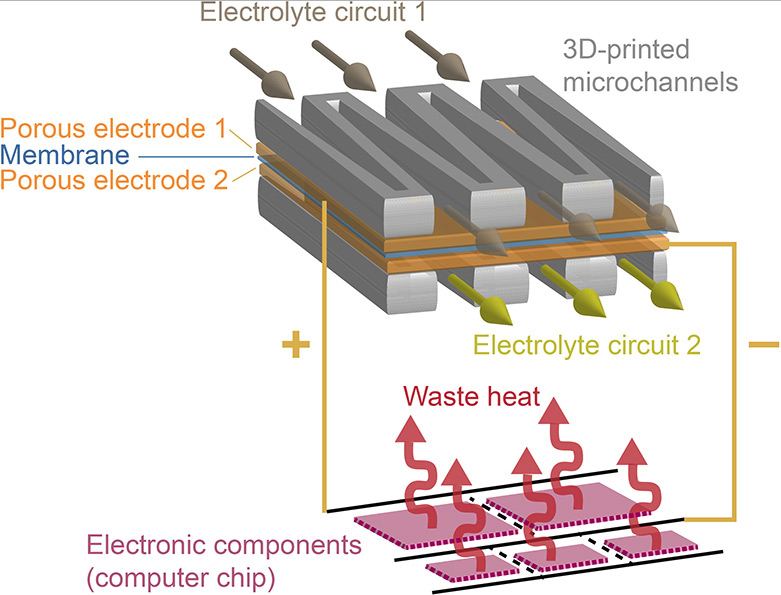
The concept of a “redox flow” battery is one that has been around for a while now. We talked about a system powered by “electric blood” back in 2015, but we’re still some way from it becoming a commercial reality. Typically they are used now for larger-scale power storage, but what the teams at IBM and ETH Zurich have achieved is something that could very well pioneer new generations of consumer-facing hardware.
“We are the first scientists to build such a small flow battery so as to combine energy supply and cooling,” says doctoral student Julian Marschewski of the project (via Engadget).
The flow battery in this case was built using 3D printing, creating a wedge-shaped channel that is able to supply the chip with power, while taking away excess heat with very little pumping required. It even broke records for its power generated, but at just 1.4 watts per centimeter, we need the flow battery to deliver much more power before it’s ready for consumer-grade hardware.
In terms of cooling, however, it was very effective. The flow system was able to dissipate far more heat than the chip produced, so there are very real applications for this sort of technology if it can be improved further.
If researchers are able to make much more efficient and powerful versions of these liquid batteries, we could see new designs for all sorts of hardware. Solar panels could use it for cooling and storing power directly in the battery cell and it could even help high-powered lasers which require internal cooling systems.





